Recent Articles
Popular Makes
Body Types
2020 Ford Explorer vs. 2020 Hyundai Palisade: Which Is Best?

2020 Ford Explorer ・ Photo by Ford
When you’re the reigning champion, competitors take aim. For years, the Ford Explorer was the best-selling mid-size SUV in America. But now, for the 2020 model year, the completely redesigned Ford Explorer faces new challenges to its segment dominance. And while some of those challenges are self-inflicted, like rising prices, some are posed by newcomers to the family-SUV class such as the 2020 Hyundai Palisade.
The new 2020 Ford Explorer comes off of its Chicago assembly line ready for a fight. In addition to three primary trim levels, you can choose the performance-tuned Explorer ST and the fuel-efficient Explorer Hybrid. Rear-wheel drive is standard, with all-wheel drive optional. Meanwhile, the South Korean-made Hyundai Palisade offers a single engine, front-wheel or all-wheel drive, and a choice of three trim levels. Does keeping it simple help Hyundai to beat the former champ from Ford? That’s what we’re going to find out in this Ford Explorer vs. Hyundai Palisade comparison.
Styling and Design
Because Ford moved the Explorer to a new rear-drive platform, the SUV boasts a long, low, rakish design. Now traditional Explorer styling cues are present and accounted for, but the proportions are completely different. Especially in its ST and Platinum trim levels, the 2020 Explorer looks terrific.
Hyundai’s daring design for the Palisade might not be to everyone’s taste, but the styling is nothing if not distinctive. Visual cues reminiscent of a Cadillac Escalade soften the impact of the Palisade’s creative lighting expressions and bold grille, while simultaneously giving the SUV an upscale appearance. While we can certainly appreciate Hyundai’s courageous approach with the Palisade, it is the Explorer that more naturally pleases the eye.
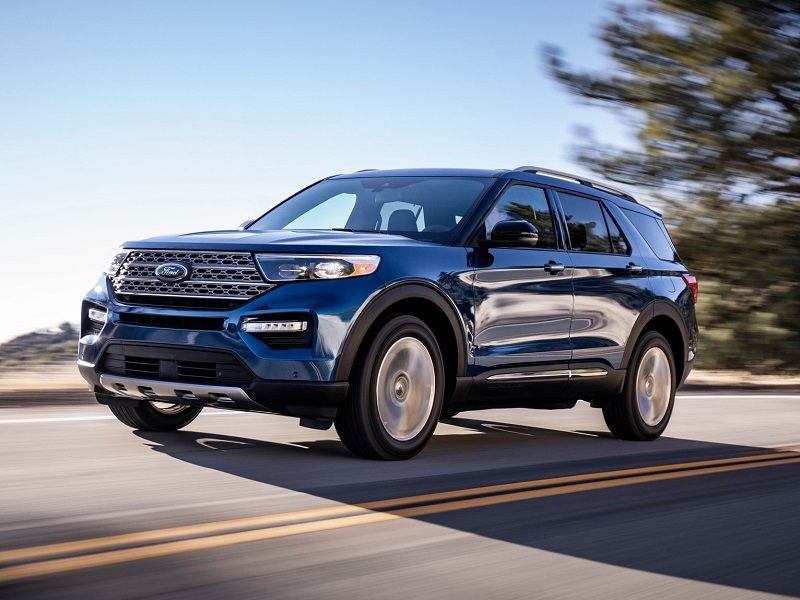
Photo by Ford
Comfort and Cargo
An unfortunate casualty of the Explorer’s new platform is a third-row seat that is basically uninhabitable by adults. And with captain’s chairs standard in most trim levels, it is essentially a four-passenger vehicle with a kid-friendly jump seat unless you opt for an extra-cost second-row bench. Cargo space behind the third-row seat also shrinks by 2.8 cubic feet to 18.2 cubic feet. Space behind the second- and third-row seats grows, though, to 47.9 cubic feet and 87.8 cubic feet.
Overall, the new Hyundai Palisade feels roomier inside, and official volume measurements bear this impression out. Plus, adults fit in all three rows of seats, and on the SEL trim, a second-row bench is a free option — allowing a to total of eight passengers to the Explorer's max of seven. Cargo volumes fall just short of the Explorer in all measurements (18, 45.8, and 86.4 cubic feet, respectively), though in practice the differences are indiscernible. Though these two SUVs stack up well against one another, the Hyundai feels bigger and more accommodating inside. Plus, most versions of the Palisade have a Clean Air cabin ionizer as part of the climate system.
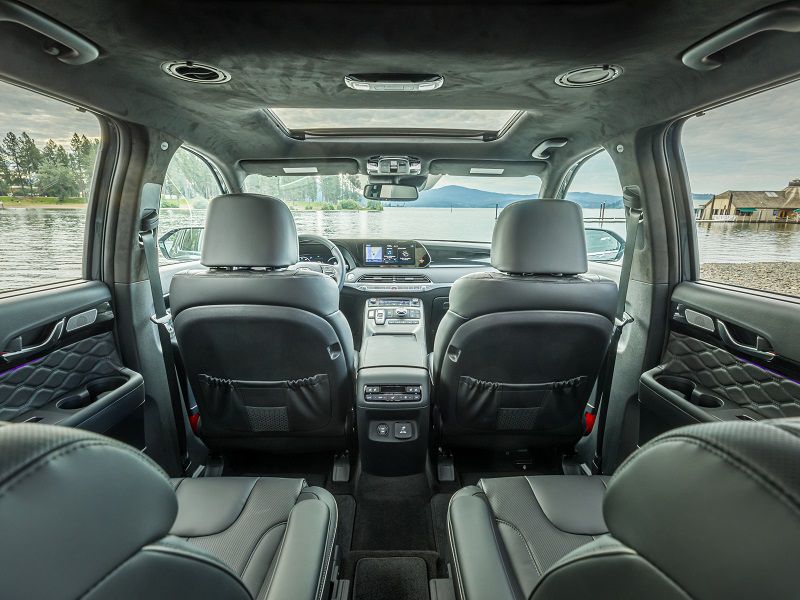
Photo by Hyundai
Infotainment System
Both of these SUVs include a standard 8-inch touchscreen infotainment system with Apple CarPlay and Android Auto. But from there, they diverge. Ford offers FordPass Connect services free for the lifetime of the vehicle, and 4G LTE Wi-Fi service is available. Ford also integrates Alexa and Waze into its infotainment systems. As an option, the Explorer offers a portrait-style 10.1-inch display that looks like an iPad that someone glued to the SUV’s dashboard. An excellent Bang & Olufsen premium sound system is also available.
Hyundai’s available Harman Kardon sound system sounds just as good as the B&O setup in the Explorer, and its optional 10.25-inch touchscreen display is deftly integrated into the dashboard design. Hyundai offers Blue Link connected services free for three years, and exclusives include a handy rear seat quiet mode and a panic notification service. However, the Hyundai is not available with a Wi-Fi hotspot or a rear entertainment system.
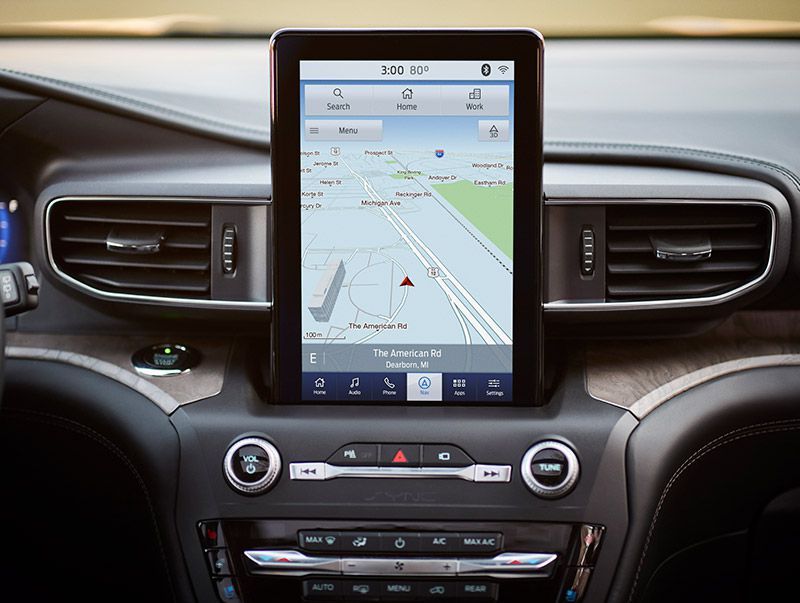
Photo by Ford
Safety and Technology
Ford and Hyundai aren’t shy about showering their family-sized SUVs with safety systems. Ford’s Co-Pilot360 and Hyundai’s Smart Sense collections of advanced driving assistance systems are standard equipment, but each SUV also offers unique value in terms of safety and technology.
For example, Ford’s blind-spot monitoring system includes trailers when towing, and this SUV offers post-collision braking, evasive steering assist, and semi-autonomous Active Park Assist 2.0 parking capability. Meanwhile, Hyundai offers an ultrasonic rear occupant alert system, a Safe Exit Assist monitor, an excellent Highway Drive Assist system for family road trips, and video-based Blind Spot View Monitoring. We find the Palisade to be the safer of the two SUVs, though. In crash tests performed by the Insurance Institute for Highway Safety, the Hyundai gets a Top Safety Pick rating. The Ford Explorer does not.
Hyundai Palisade

Photo by Hyundai
Power and Performance
Most Explorers have a small but mighty turbocharged 2.3-liter four-cylinder engine making 300 horsepower and 310 lb-ft of torque. Choose the ST or Platinum trim, and you get a twin-turbocharged 3.0-liter V6 in the ST and Platinum, which makes up to 400 hp and 415 lb-ft. Maximum towing amounts to 5,600 pounds, and these turbocharged engines perform better at elevation than the Palisade’s naturally aspirated V6. An Explorer Hybrid is also available, based on a 3.3-liter V6 engine and delivering 318 hp and 322 lb-ft of torque.
Hyundai keeps it simple, offering a 3.8-liter V6 engine whipping up 291 hp and 262 lb-ft of torque. The Palisade weighs hundreds of pounds less than the Explorer, though, while towing as much as 5,000 lbs. Still, this simply isn’t enough muscle to keep up, and Ford does a better job serving a wider variety of customers.
Ford Explorer
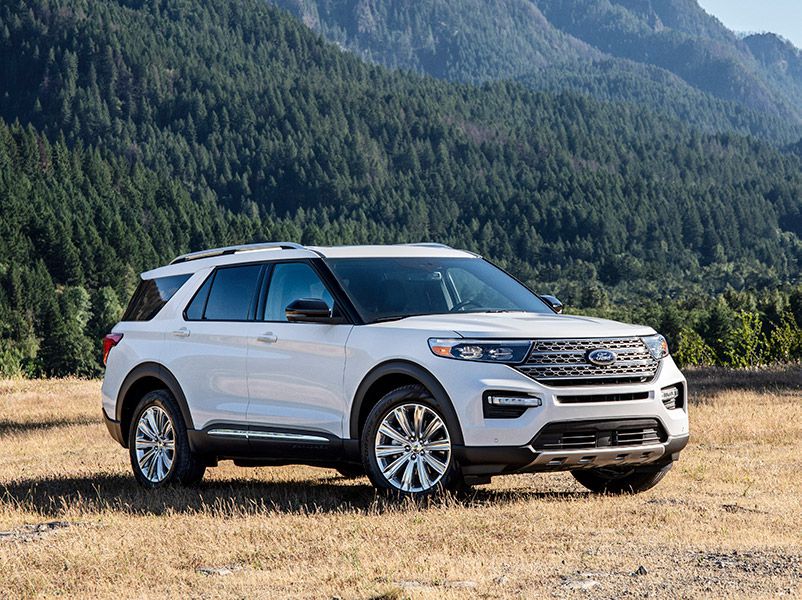
Photo by Ford
Fuel Economy
Depending on the engine and drivetrain you choose, the 2020 Explorer is EPA-rated to get between 20 mpg and 28 mpg in combined driving. Of course, your ability to match these figures, especially with the turbocharged engines, is entirely up to your right foot and your chosen driving mode. In our experience, turbos rarely get what the EPA says you should expect.
Meanwhile, the Palisade is rated to get 22 mpg with front-wheel drive, and 21 mpg with all-wheel drive. That’s slightly below the most popular Explorer configurations, which post 24 mpg with rear-wheel drive and 23 mpg with all-wheel drive. Based on the numbers — and the fact that the Ford is offered with a much more efficient hybrid powertrain — it wins this contest. But the reality is that the Palisade’s V6 might be just as efficient out in the real world as the Explorer’s turbo-four.
Ford Explorer

Photo by Ford
Driving Dynamics
Thanks to its new rear-drive platform and available ST performance variant, the 2020 Ford Explorer is one of the more enjoyable SUVs to drive. Quick, balanced, and responsive regardless of trim level, the Explorer’s enemy is its comparatively portly weight, which forces the suspension to work overtime to eliminate unwanted body motions. The solution, of course, is to get the stiffer and more powerful Explorer ST. When optioned properly, it’s got the guts to take on tuned versions of luxury SUVs.
Nevertheless, the Hyundai Palisade provides agreeable driving dynamics in its own right. The V6 offers good power, and Hyundai has fine-tuned the steering and brakes for smooth and accurate operation. The ride is unexpectedly taut, giving the Palisade an athletic feel from behind the wheel. It’s just not as engaging to drive as the Explorer can be.
Ford Explorer
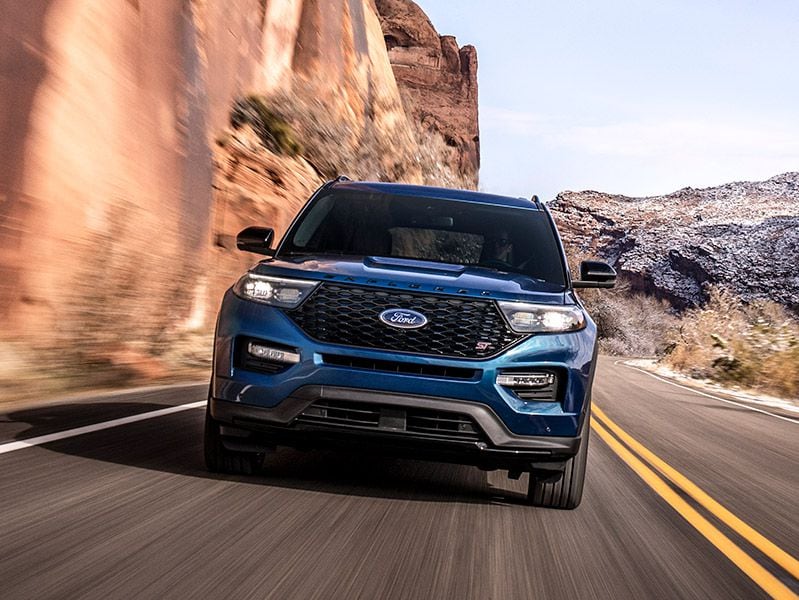
Photo by Ford
Value
Pricing is a problem for the 2020 Ford Explorer. Evidently, Ford has baked in the inevitable rebates and incentives that will be necessary in order to sell these SUVs. Consider this: Ford’s Limited trim level starts higher than where Hyundai’s absolutely loaded Limited trim level peaks. And that’s before adding all-wheel drive or any other options, or upgrading to the hybrid powertrain. Both the Explorer ST and Explorer Platinum are even more expensive, base-priced from more than $55,000.
Meanwhile, the Palisade Limited is decked out with diamond-quilted premium leather, a simulated suede headliner, and every feature Hyundai offers for this SUV. It looks, smells, and feels like a luxury SUV except for the inexpensive plastic on many interior panels. It immediately strikes its driver as a bargain at its sticker price, whereas the Ford feels like a rip-off. Sealing the easy win for the Hyundai is its industry-leading warranty, free Blue Link services for three years, and free scheduled maintenance for three years.
Hyundai Palisade
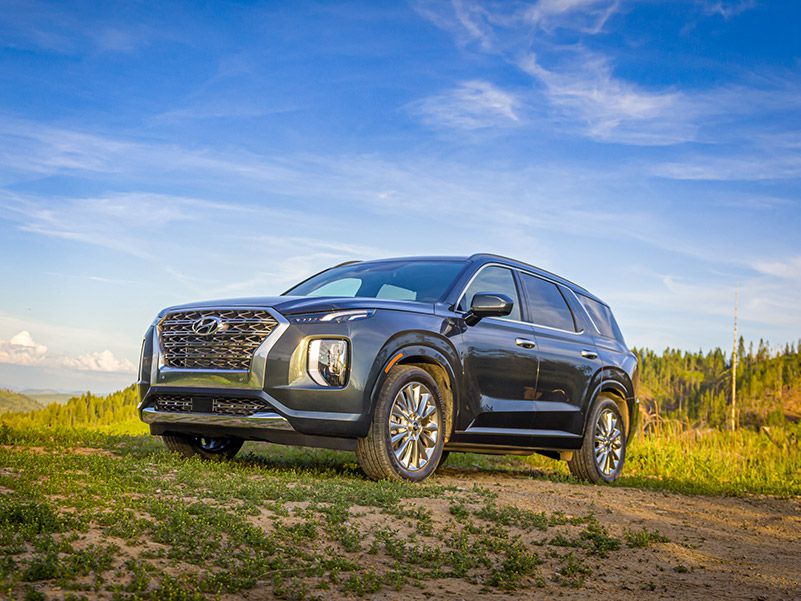
Photo by Hyundai
The Verdict
Ford pulls off a slim victory here, mostly because it is available with an efficient hybrid powertrain and in a performance-tuned ST trim level that is terrific fun to drive. Therefore, if you’re getting the Explorer Hybrid or the Explorer ST, the Hyundai Palisade cannot compete. If you’re not, the Hyundai might actually be the better SUV.
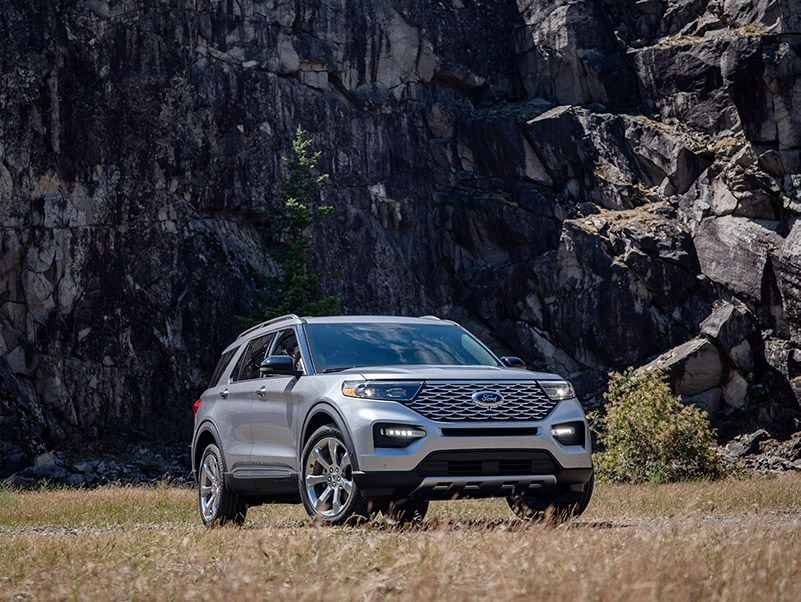
Photo by Ford